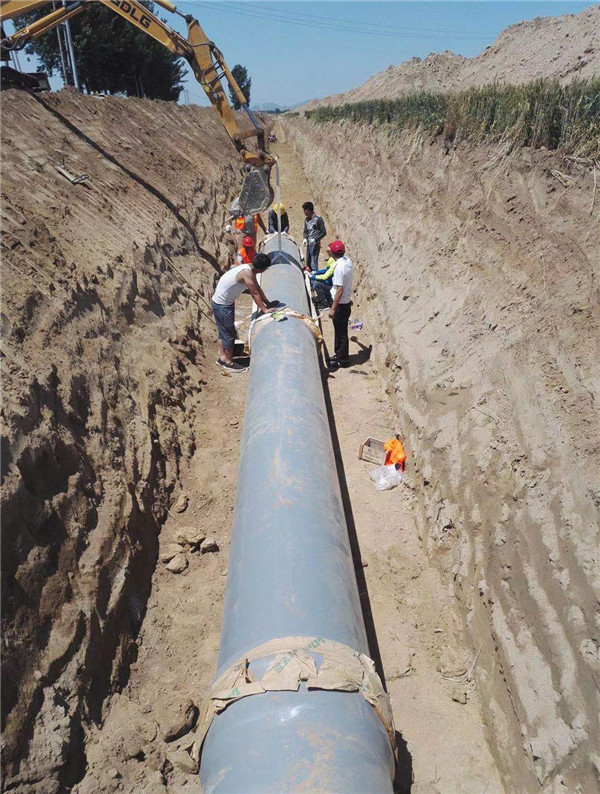Nov . 21, 2024 13:31 Back to list
ppr pipe fitting
Understanding PPR Pipe Fittings A Comprehensive Guide
PPR, or Polypropylene Random Copolymer, is a type of plastic that has gained significant popularity in plumbing and construction due to its unique properties and advantages. One of the most crucial components in any plumbing system is the fittings used to join pipes together. PPR pipe fittings play an essential role in ensuring the durability and efficiency of piping systems. In this article, we will discuss the characteristics of PPR pipe fittings, their applications, installation methods, and benefits.
Characteristics of PPR Pipe Fittings
PPR pipe fittings are known for their excellent resistance to corrosion, high temperature, and chemical substances. Made from strong, non-toxic materials, they are ideal for drinking water supply, which makes them a safe choice for residential and commercial plumbing. Unlike metal fittings, PPR fittings do not rust or corrode over time, which enhances the longevity of the entire plumbing system. Additionally, PPR fittings are lightweight, making them easier to handle and install compared to traditional materials like copper or steel.
Another notable feature of PPR fittings is their thermal stability. They can withstand temperatures up to 95°C (203°F), making them suitable for both hot and cold water applications. This property also allows PPR fittings to maintain their structural integrity over time, even under fluctuating temperature conditions.
Types of PPR Pipe Fittings
PPR pipe fittings come in various types and sizes to accommodate different plumbing needs. Common types include
1. Elbows Used to change the direction of the pipe, elbow fittings are essential for navigating bends and turns in plumbing systems. 2. Tees These fittings allow for a branch connection to be made from a main pipe, facilitating the supply of water to multiple outlets.
3. Couplings Couplings are used to connect two sections of pipe together, ensuring a secure attachment without any leakage.
5. End Caps Used to close the end of a pipe, end caps contribute to the integrity of the plumbing system by preventing leaks or contamination.
Installation Methods
ppr pipe fitting

Installing PPR pipe fittings requires careful preparation and the right tools. The most common method for joining PPR fittings to pipes is through heat fusion. This process involves heating the pipe end and the fitting simultaneously until they reach the required temperature, then quickly joining them together to create a secure bond as they cool.
It’s vital to ensure that the surfaces are clean and free from debris to achieve a strong connection. The installation process is quick and efficient, which can save time and labor costs for contractors and DIY enthusiasts alike.
Benefits of PPR Pipe Fittings
Choosing PPR pipe fittings for plumbing projects offers several advantages
1. Cost-Effectiveness PPR fittings are generally less expensive than their metal counterparts, providing an affordable solution for large-scale plumbing installations.
2. Low Maintenance Due to their corrosion resistance and durability, PPR fittings require less maintenance over time, reducing long-term costs.
3. Versatile Applications They can be used in various environments, including residential plumbing, industrial processes, and agricultural systems.
4. Environmental Impact PPR is a recyclable material, making it a more environmentally friendly option compared to many other plastic and metal alternatives.
5. Ease of Handling and Installation The lightweight nature of PPR fittings makes them easier to transport and install, contributing to faster project completion.
Conclusion
PPR pipe fittings represent a modern solution to traditional plumbing challenges, offering an effective blend of durability, efficiency, and cost savings. With their unique properties and wide range of applications, these fittings are becoming the preferred choice for both professionals and DIY enthusiasts. Understanding the benefits and installation methods of PPR fittings can help ensure the success of plumbing projects and promote better management of water resources. As the demand for reliable and sustainable plumbing solutions continues to grow, PPR pipe fittings will undoubtedly play a pivotal role in the future of construction and plumbing systems.
-
High-Quality PPR Pipes and Fittings Durable ERA PPR & PVC PPR Solutions
NewsJul.08,2025
-
Black HDPE Cutting Board - Durable, Non-Porous & Food Safe HDPE Plastic Cutting Board
NewsJul.08,2025
-
High-Quality CPVC Panel Durable HDPE & PVC Panels Supplier
NewsJul.08,2025
-
Double PE Welding Rod Supplier - High Strength, Durable & Versatile Welding Solutions
NewsJul.07,2025
-
High-Quality PVC-O Pipe Supplier Durable 75mm PVC Pipe & Connections Leading PVC Pipe Company
NewsJul.07,2025
-
HDPE Drainage Pipe Supplier – Durable & Corrosion-Resistant Solutions
NewsJul.06,2025

